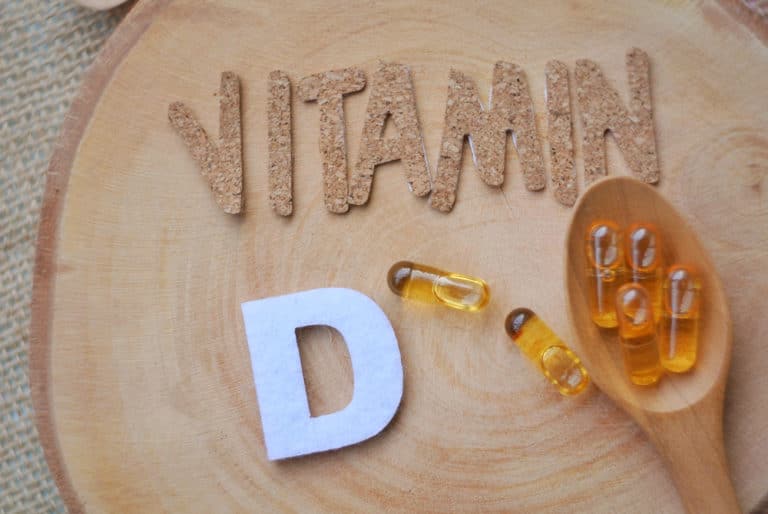In the world of flavors, cinnamon reigns supreme — an aromatic spice that has graced kitchens and palates for generations. From adding depth to baked goods to infusing warmth into beverages, cinnamon is a culinary hero.
But have you ever paused to consider the type of cinnamon you’re using in your dishes? Surprisingly, what many regard as cinnamon might not be the real deal. Instead, our cupboards might be hosting fake cinnamon.
As it turns out, there are two major types of this spice: cassia and Ceylon. While both have their unique qualities and uses, it’s essential to understand their differences and ensure you’re getting the best-quality spice when reaching for that jar.
What Is True Cinnamon?
True cinnamon hails from the inner bark of the Cinnamomum verum tree, predominantly grown in Sri Lanka, once known as Ceylon — hence the name.
Historically, true cinnamon was so valued that explorers traveled thousands of miles searching for its source, leading to the establishment of intricate trade routes. Unlike other varieties that many mistake for cinnamon, Ceylon offers a lighter, more refined taste. It’s often described as having a subtle sweetness coupled with a hint of citrus, making it highly valued in various culinary delights.
Ceylon cinnamon’s unique flavor makes it a sought-after ingredient in both sweet and savory dishes. It lends a refined touch to baked goods, such as pastries and cookies, as well as enhancing the flavor of curries, stews, and sauces. Its delicate nature makes it particularly suitable for recipes where a subtle cinnamon presence is desired. Beyond its culinary applications, Ceylon cinnamon is valued in traditional medicine systems for its potential health-promoting properties.
What Is Fake Cinnamon?
“Fake cinnamon” is a term used to describe the cassia variant, derived from the Cinnamomum cassia tree, native to China. The term “fake” can be misleading, as cassia is still a form of cinnamon. It’s more abundant, cheaper to produce, and hence more widely available in stores.
The robust, spicier taste of cassia is what most people in Western countries recognize as the flavor of cinnamon. Its aroma is intense, and its flavor can be slightly bitter or peppery.
Cassia cinnamon has commonly been used as a substitute for Ceylon cinnamon due to its availability and affordability. In culinary applications where a strong cinnamon flavor is desired, cassia cinnamon can serve as an excellent choice. It’s often used in dishes where the spice’s boldness can complement the other flavors, such as in hearty stews, mulled wines, and spiced desserts.
Real vs. Fake Cinnamon: Distinguishing Between Ceylon and Cassia
When placed side by side, distinguishing between Ceylon and Cassia is quite straightforward:
- Color: One of the primary visual distinctions lies in the color of the cinnamon sticks. Ceylon cinnamon typically has a tan-brown hue, while cassia cinnamon tends to exhibit a reddish-brown tint. This color difference becomes more pronounced when you closely observe the bark of the cinnamon sticks.
- Texture and Appearance: Cassia cinnamon bark is generally thicker, darker, and rougher compared to the smoother and thinner bark of Ceylon cinnamon.
- Smell and Flavor: Ceylon cinnamon has a delicate and sweet fragrance, while cassia cinnamon gives off a more assertive and robust aroma. These scent variations translate into differences in flavor, with Ceylon cinnamon offering a nuanced and refined taste, while cassia cinnamon tends to be bolder.

Spice of Life: Health Benefits of Cinnamon
Cinnamon isn’t just a delightful spice that adds depth to various dishes. The spice, especially Ceylon, boasts an array of health benefits that have been recognized for centuries and are now supported by modern research:
1. Blood Sugar Regulation: Multiple studies suggest that cinnamon can improve sensitivity to the hormone insulin, responsible for transporting sugar from the bloodstream into cells. This increased sensitivity can play a role in reducing blood sugar levels, making cinnamon a valuable ally for those managing type 2 diabetes. [1,2]
2. Antioxidant Properties: Cinnamon is rich in antioxidants, specifically polyphenols, which combat oxidative stress in the body. These antioxidants help neutralize harmful free radicals, potentially protecting the body from inflammation and reducing the risk of chronic diseases. [3,4]
3. Anti-inflammatory Effects: Chronic inflammation is a root cause of many severe health conditions, from heart disease to cancer. Some compounds in cinnamon have demonstrated anti-inflammatory properties that can help reduce the body’s inflammatory responses. [5]
5. Heart Health Boost: Cinnamon has been linked to reduced levels of total cholesterol, LDL cholesterol, and triglycerides, while HDL cholesterol remains stable. Its lipid-lowering properties combined with its anti-inflammatory nature can contribute to overall heart health. [6,7]
6. Neuroprotective Qualities: Early research suggests that compounds in cinnamon, especially in Ceylon, may play a role in protecting neurons, improving motor function, and enhancing cognitive function, making it a topic of interest in neurodegenerative disease research. [8]
7. Antimicrobial and Antifungal Properties: Cinnamon oil has demonstrated potent activity against certain harmful bacteria and fungi. This means it can be a natural preservative and is also used in some cultures to treat respiratory and systemic fungal infections. [9]
8. Digestive Health Support: Cinnamon has traditionally been employed as a remedy for gastrointestinal problems. Its carminative properties assist in relieving gas, bloating, and stomach discomfort. Moreover, its warming nature can alleviate indigestion and irregular bowel movements, ensuring smoother digestive processes. [10]
9. Radiant Skin and Beauty Benefits: Cinnamon’s antimicrobial properties make it a popular choice in skincare. When used in moderation, it can combat acne-causing bacteria, reduce skin inflammation, and promote a healthy complexion. Furthermore, the antioxidants present in cinnamon can fend off skin aging by mitigating the damage caused by free radicals. [11]
10. Mood and Stress Management: The comforting aroma of cinnamon has been known to uplift moods and reduce feelings of frustration or irritability. Some studies even suggest that cinnamon compounds can counteract the negative biochemical changes caused by stress, offering a calming effect on both the mind and body. [12]
What’s in Fake Cinnamon? Understanding the Health Implications
While both types of cinnamon contain compounds that contribute to their health benefits, cassia cinnamon contains significantly higher levels of coumarin, which can be harmful in excessive amounts.
Coumarin (benzo-α-pyrone) is a natural compound present in numerous plants that offer pleasant flavors, such as tonka bean, vanilla, woodruff, and even citrus fruits or green tea. However, the primary dietary source of coumarin for humans is cinnamon.
Cassia cinnamon has a coumarin content of up to 1%, while true cinnamon has a mere trace, about 0.004%. [13]
Research indicates that excessive intake of coumarin may have toxic effects on the liver and could potentially lead to liver damage. Additionally, coumarin has been associated with the risk of causing allergies and skin sensitization in some individuals.

My Personal RX: Spicing Up Your Diet & Health
Isn’t it incredible how a dash of spice can transform the ordinary into extraordinary? That’s precisely why staples like Ceylon cinnamon should claim a rightful spot in every kitchen cupboard. Infusing your home-cooked meals with this aromatic wonder doesn’t just tantalize taste buds – it turns every meal into a delightful culinary journey.
Below are my personalized recommendations as a doctor on how to spice up your diet and culinary experience in healthier ways.
1. Diversify With Spices: Experiment with different spices in your meals. Not only do they elevate flavors, but they also pack numerous health benefits.
2. Soup It Up: A bowl of soup isn’t just warm and comforting — it’s a vessel of nutrition. Adding a stick of cinnamon can enhance flavor and infuse health benefits into your broth.
3. Turn Meals Into Masterpieces: Looking to integrate cinnamon and other nutritious ingredients seamlessly? Get inspired with my collection of mouthwatering and nutritious recipes in the Superfoods Cookbook. Grab your copy now!
4. Practice Mindful Eating: Connect with each bite. Understanding the origin and benefits of your ingredients enhances appreciation, taste, and nourishment.
5. Detoxify and Recharge: Elevate your well-being journey with our Detox Bundle supplements. With potent aids Liver Support mirroring cinnamon’s benefits and Fiber Complete to fine-tune digestion, it’s wellness reimagined.
Your plate, your canvas. Let’s paint a beautiful, flavorful, and healthy picture!

Sources:
- Kızılaslan, N., & Erdem, N. Z. (2019). The effect of different amounts of cinnamon consumption on blood glucose in healthy adult individuals. International Journal of Food Science, 2019, 1–9. https://doi.org/10.1155/2019/4138534
- Khan, A., Safdar, M., Khan, M. M. A., Khattak, K. N., & Anderson, R. A. (2003). Cinnamon improves glucose and lipids of people with type 2 diabetes. Diabetes Care, 26(12), 3215–3218. https://doi.org/10.2337/diacare.26.12.3215
- Moreno, E. K. G., De Macêdo, I. Y. L., Batista, É. A., Machado, F. B., Santos, G. R., De Andrade, D. M. L., Rocha, M. L., Lima, N. M., Vaz, B. G., & De Souza Gil, E. (2022). Evaluation of antioxidant potential of commercial cinnamon samples and its vasculature effects. Oxidative Medicine and Cellular Longevity, 2022, 1–13. https://doi.org/10.1155/2022/1992039
- Borzoei, A., Rafraf, M., Niromanesh, S., Farzadi, L., Narimani, F., & Doostan, F. (2018). Effects of cinnamon supplementation on antioxidant status and serum lipids in women with polycystic ovary syndrome. Journal of Traditional and Complementary Medicine, 8(1), 128–133. https://doi.org/10.1016/j.jtcme.2017.04.008
- Hariri, M., & Ghiasvand, R. (2016). Cinnamon and chronic diseases. In Advances in Experimental Medicine and Biology (pp. 1–24). https://doi.org/10.1007/978-3-319-41342-6_1
- Hadi, A., Campbell, M. S., Hassani, B., Pourmasoumi, M., Salehi-Sahlabadi, A., & Hosseini, S. A. (2020). The effect of cinnamon supplementation on blood pressure in adults: A systematic review and meta-analysis of randomized controlled trials. Clinical Nutrition ESPEN, 36, 10–16. https://doi.org/10.1016/j.clnesp.2020.01.002
- Maierean, S., Serban, M., Sahebkar, A., Ursoniu, S., Serban, A., Penson, P. E., & Banach, M. (2017). The effects of cinnamon supplementation on blood lipid concentrations: A systematic review and meta-analysis. Journal of Clinical Lipidology, 11(6), 1393–1406. https://doi.org/10.1016/j.jacl.2017.08.004
- Hajinejad, M., Ghaddaripouri, M., Dabzadeh, M., Forouzanfar, F., & Negah, S. S. (2020). Natural cinnamaldehyde and its derivatives ameliorate neuroinflammatory pathways in neurodegenerative diseases. BioMed Research International, 2020, 1–9. https://doi.org/10.1155/2020/1034325
- Atki, Y. E., Aouam, I., Kamari, F. E., Taroq, A., Nayme, K., Timinouni, M., Lyoussi, B., & Abdellaoui, A. (2019). Antibacterial activity of cinnamon essential oils and their synergistic potential with antibiotics. Journal of Advanced Pharmaceutical Technology & Research, 10(2), 63. https://doi.org/10.4103/japtr.japtr_366_18
- Arbati, A., Maham, M., & Dalir-Naghadeh, B. (2021). The effect of cinnamaldehyde on the contractility of bovine isolated gastrointestinal smooth muscle preparations. PubMed, 12(3), 313–318. https://doi.org/10.30466/vrf.2020.112185.2670
- Julianti, E., Rajah, K. K., & Fidrianny, I. (2017). Antibacterial Activity of Ethanolic Extract of Cinnamon Bark, Honey, and Their Combination Effects against Acne-Causing Bacteria. Scientia Pharmaceutica, 85(2), 19. https://doi.org/10.3390/scipharm85020019
- Suriyagoda, L., Mohotti, A. J., Vidanarachchi, J. K., Kodithuwakku, S. P., Chathurika, M., Bandaranayake, P. C. G., Hetherington, A. M., & Beneragama, C. (2021). “Ceylon cinnamon”: Much more than just a spice. Plants, People, Planet, 3(4), 319–336. https://doi.org/10.1002/ppp3.10192
- Blahova, J., & Svobodová, Z. (2012). Assessment of coumarin levels in ground cinnamon available in the Czech retail market. The Scientific World Journal, 2012, 1–4. https://doi.org/10.1100/2012/263851


















